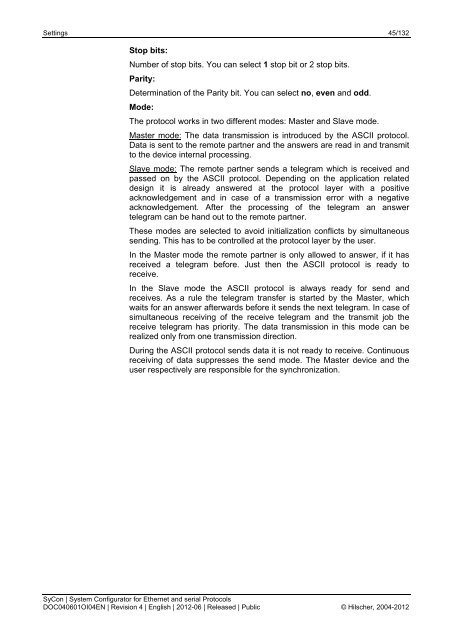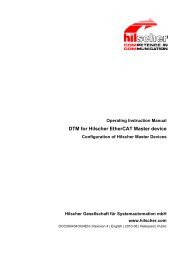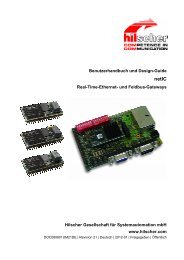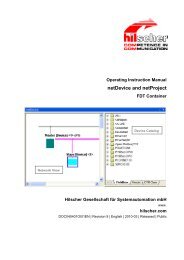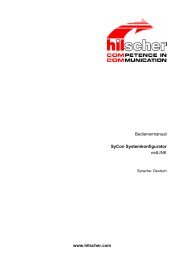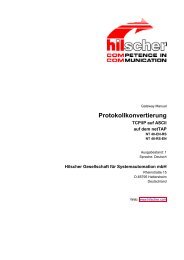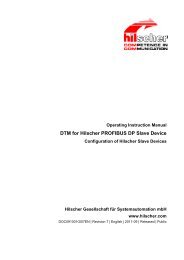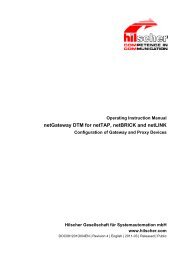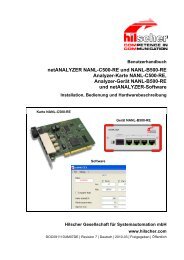Operating Instruction Manual SyCon System Configurator for ...
Operating Instruction Manual SyCon System Configurator for ...
Operating Instruction Manual SyCon System Configurator for ...
You also want an ePaper? Increase the reach of your titles
YUMPU automatically turns print PDFs into web optimized ePapers that Google loves.
Settings 45/132<br />
Stop bits:<br />
Number of stop bits. You can select 1 stop bit or 2 stop bits.<br />
Parity:<br />
Determination of the Parity bit. You can select no, even and odd.<br />
Mode:<br />
The protocol works in two different modes: Master and Slave mode.<br />
Master mode: The data transmission is introduced by the ASCII protocol.<br />
Data is sent to the remote partner and the answers are read in and transmit<br />
to the device internal processing.<br />
Slave mode: The remote partner sends a telegram which is received and<br />
passed on by the ASCII protocol. Depending on the application related<br />
design it is already answered at the protocol layer with a positive<br />
acknowledgement and in case of a transmission error with a negative<br />
acknowledgement. After the processing of the telegram an answer<br />
telegram can be hand out to the remote partner.<br />
These modes are selected to avoid initialization conflicts by simultaneous<br />
sending. This has to be controlled at the protocol layer by the user.<br />
In the Master mode the remote partner is only allowed to answer, if it has<br />
received a telegram be<strong>for</strong>e. Just then the ASCII protocol is ready to<br />
receive.<br />
In the Slave mode the ASCII protocol is always ready <strong>for</strong> send and<br />
receives. As a rule the telegram transfer is started by the Master, which<br />
waits <strong>for</strong> an answer afterwards be<strong>for</strong>e it sends the next telegram. In case of<br />
simultaneous receiving of the receive telegram and the transmit job the<br />
receive telegram has priority. The data transmission in this mode can be<br />
realized only from one transmission direction.<br />
During the ASCII protocol sends data it is not ready to receive. Continuous<br />
receiving of data suppresses the send mode. The Master device and the<br />
user respectively are responsible <strong>for</strong> the synchronization.<br />
<strong>SyCon</strong> | <strong>System</strong> <strong>Configurator</strong> <strong>for</strong> Ethernet and serial Protocols<br />
DOC040601OI04EN | Revision 4 | English | 2012-06 | Released | Public © Hilscher, 2004-2012


